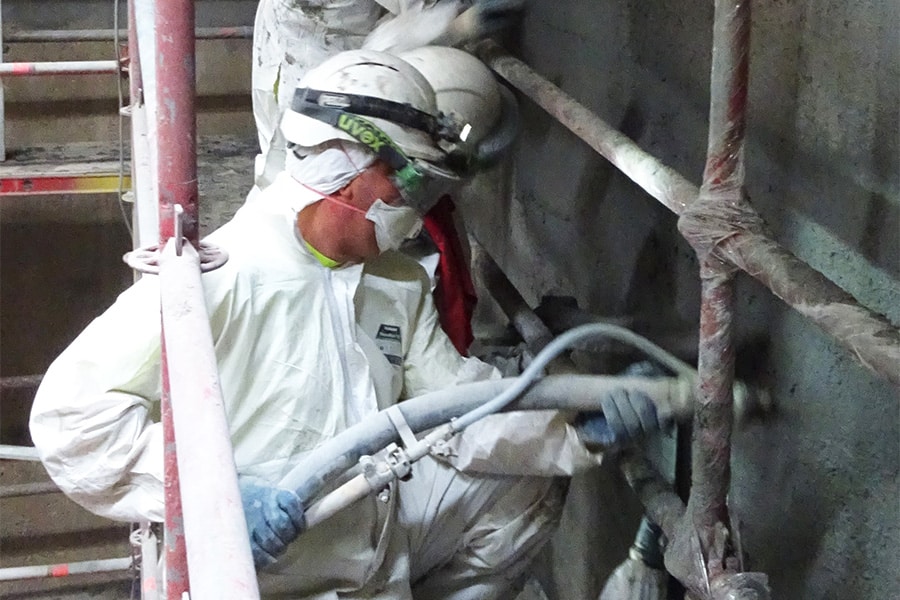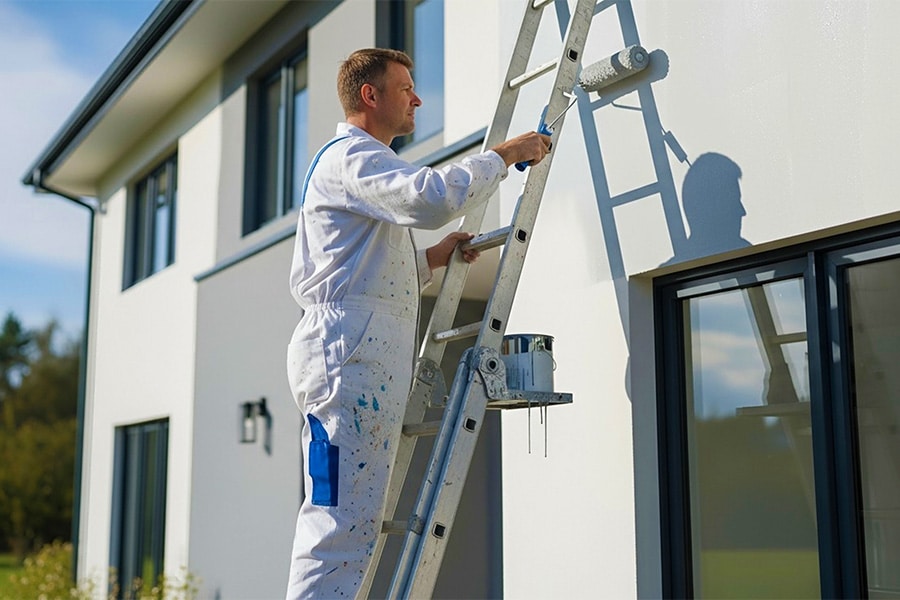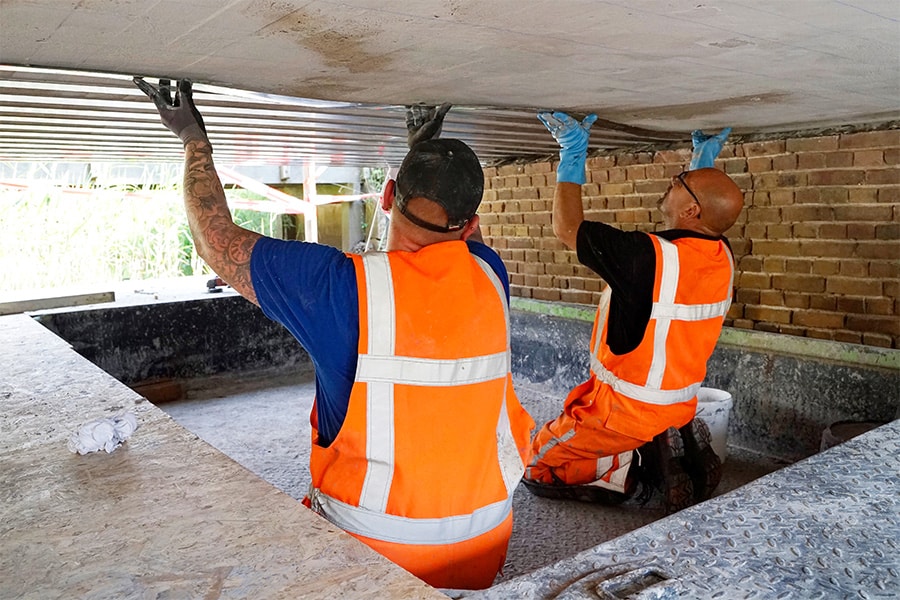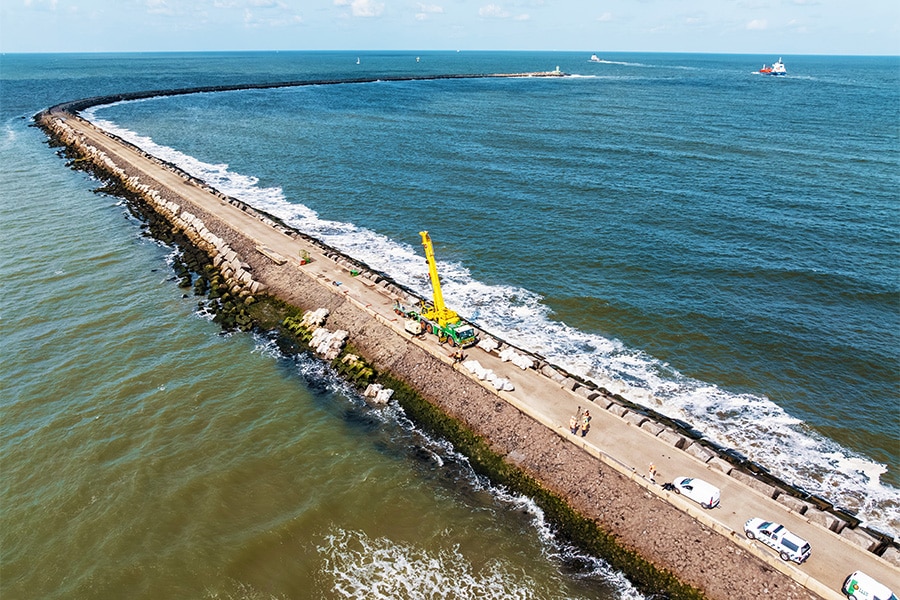
Breakwaters made of sustainable concrete mixtures at Zuidpier IJmuiden
Concrete is one of the most widely used building materials in the world, but its impact on the environment is great. Rijkswaterstaat takes its responsibility and makes available so-called ‘living labs’ to accelerate sustainability. In early August 2025, a milestone was reached in making the concrete sector more sustainable: at the Zuidpier in IJmuiden, concrete breakwater elements made with more sustainable concrete mixtures were installed.
The test site at the Zuidpier is related to the large-scale reinforcement and renewal of the Afsluitdijk. “On the Afsluitdijk project, we made an initial sustainability step by producing a small percentage of the Levvel blocks (breakwater elements, ed.) from more sustainable concrete mixtures,” says Penny Pipilikaki, senior technical advisor at Rijkswaterstaat. “The requirements for these blocks were high because they play an important role in protecting the country from flooding. Therefore, the innovative elements also had to meet a Technology Readiness Level (TRL) of 6, requiring the same performance as regular mixtures.”
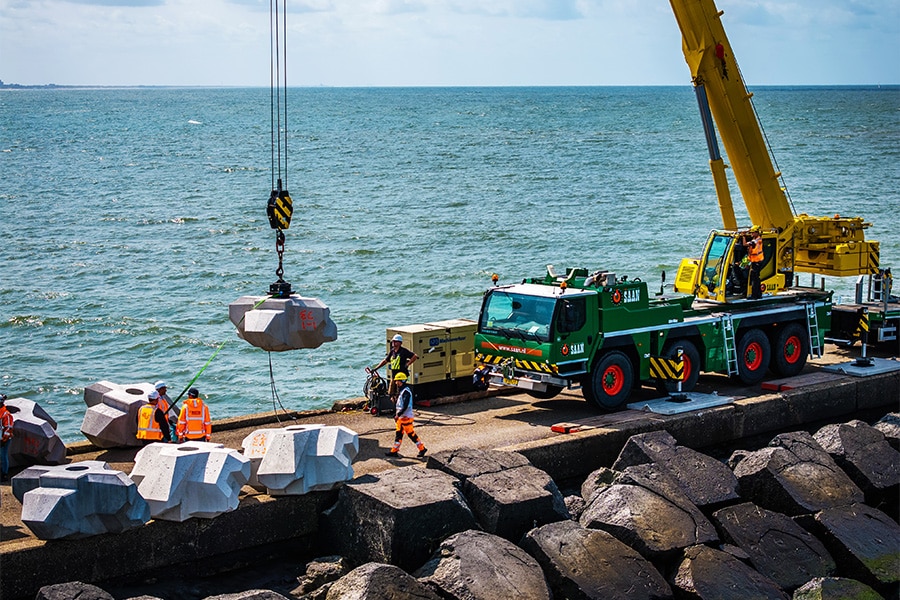
Twelve innovative blends
Setting such high requirements places limitations on the development of new concrete mixtures for this type of application, Pipilikaki rightly states. “This is why in 2021 we decided to initiate a second living lab to evaluate different concrete variants in a realistic but less risky setting. This is how the living lab at the Zuidpier in IJmuiden came about. In this living lab, concrete mixtures are tested that may not qualify for the strict requirements of the Afsluitdijk, but are exposed to the same conditions. The blocks in IJmuiden have no flood protection function, but are there purely as a test.”
The breakwaters with innovative concrete mixtures were installed in two phases. In the summer of 2023, blocks produced partly from remnants of the Afsluitdijk were already placed, while last August Levvel blocks made of nine innovative mixtures were placed.
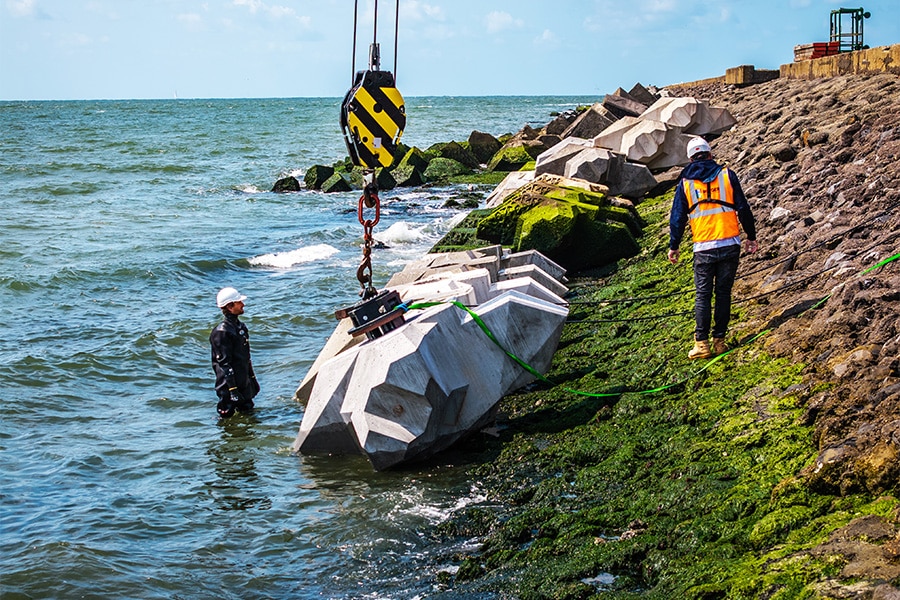
MKI and lifespan
Concrete mixes differ from each other in alternative binders, cements and/or aggregates. “Traditional concrete mixes have a relatively high Environmental Cost Indicator (EQI). The goal is to reduce the MKI of the mixes, which can be done, for example, by using alternatives to traditional cement,” Pipilikaki said. “The MKI of regular concrete is above 20 euros per m3, here in the test site the MKI of the total of 12 mixtures varies between 6 and 17 euros per m3. On the other hand, service life is important. The aim is to optimize the relationship between the lifetime of the concrete and the MKI value, because the blocks must also be sufficiently durable to perform their intended function for a long time. Finally, of course, we also want the industry to remain ‘clean. No harmful materials must be used.’
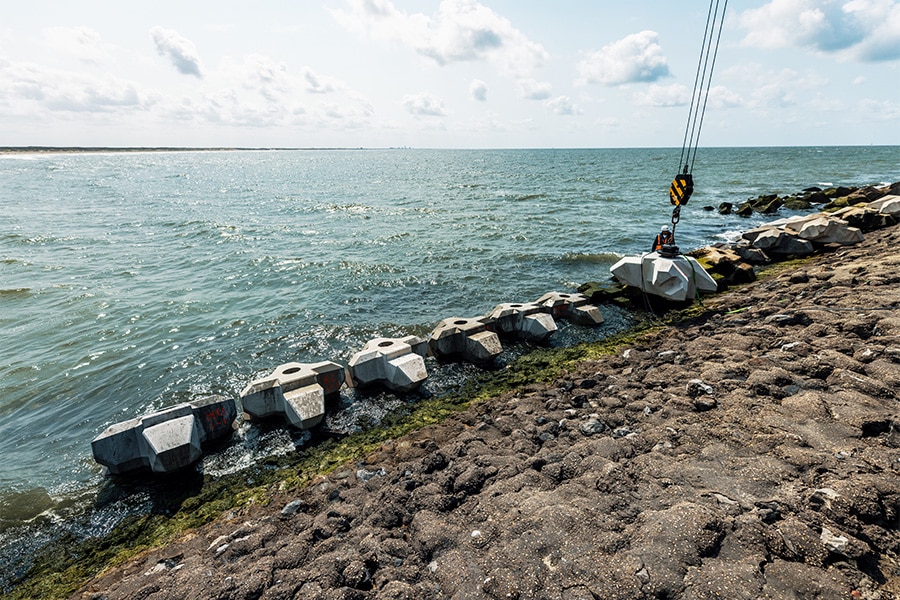
Monitoring and testing
All the blocks were poured in the same way in the same plant. “The purpose of this living lab is twofold,” says Pipilikaki. “First, as the Department of Public Works, we want to encourage innovation and second, we want to monitor how the mixtures behave under similar conditions. We do this by monitoring and testing them in the same way. An annual visual inspection takes place and every few years extensive laboratory tests are done and cores are drilled, whose strength, carbonation and chloride intrusion are measured. Analyses are also performed to determine whether the microstructure of the concrete remains intact under harsh environmental conditions, such as saltwater and erosion.”
The proving ground in IJmuiden offers a unique opportunity to test innovative concrete compositions in a realistic environment. “We test here under extreme conditions: salt seawater, strong winds and waves. Ideal to see whether the new mixtures remain strong and durable in the long term. In ten years we need to know: can this concrete withstand the sea and can we use it safely in projects afterwards?”

